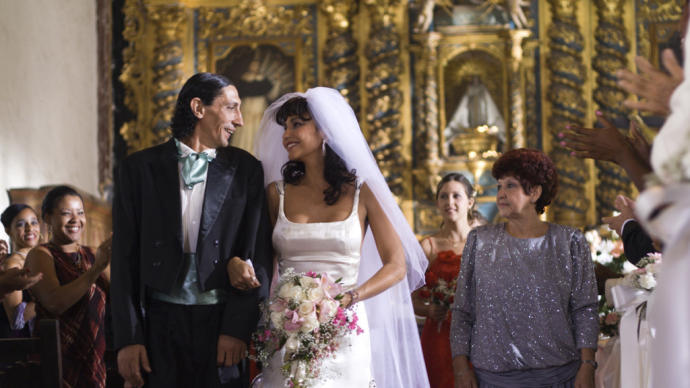Xavier Carbonell, SIGNIS Correspondent
Ghosts of time and memory, voices that demand to be heard, a thin ray of light that emerges from the projector. A unique story, painful as an old song, profound as death. A piece of hope carefully kept inside a lamp that is being punished by the storm: paradise can be regained, a sweet and prosperous utopia, floating in the sea of solitude.
Twenty years of crisis. Twenty years in which one generation grew old, other became almost worthless, and another started its life inside the tragedy of a lost island. In the meanwhile, many directors and writers catalogued and reviewed this inventory of frustrations in order to tell their stories. With this fables, the cinema couldn’t give food and fortune to Cubans, but they recovered for us the determination of laughter.
The collective nature of frustration was the inner cause for the characters of El cuerno de la abundancia (Horn of Plenty, 2008) —directed by Juan Carlos Tabío—, determined to be happy even if, in Cuba, happiness seemed to be bad publicity from capitalism. The movie proved that, against all odds, the Cubans were willing to do anything to bring back some hope.
In Yaragüey —a random town in Cuba— circulates the news that a European bank is about to deliver a multimillionaire heritage to the Cubans able to claim it: those who possess the last name Castiñeira. All over the country, a mobilization starts: some of them organize commissions; others demand their baptism certificates; multiple documents are signed; everybody is in debt with someone. Everything will be forgiven when a thousand Castiñeira heirs cash their money.
The story is even more pathetic when we know that it was real. A couple of decades ago, the so-called heritage of the Manso de Contreras —an old Cuban family— was supposed to be cashed by almost everyone in the center of the country. (I can assure, by the way, that I know more than one dreamer that succumbed to this peculiar gold rush).
Juan Carlos Tabío turned Yaragüey into a metaphor appropriate to the entire island: it is the faith of those who cannot lose anything else. For them, myth, fiction, believing in the unbelievable, are the only ways to fight despair. Those were the same that travel from many far places in 1998 to encounter the Pope; those who trade the membership of the Communist Party for the Afro-Cuban Santeria; or those who were forced to exchange love in return for international prostitution, or their homeland for exile.
While the camera walks away from the final scene, where everybody cries, argues and demands an explanation, each Cuban wonders what is to come now, what is the next surprise kept for us by fortune.
Before I finish this love and disillusion letter in seven parts, I must ask the reader to forgive me for the tricky nature of words: I never spoke enough of cinema, but too much of Cuba. Cuba is present within these films, and those who see them will walk through the pain of my people and the love of many vanished specters. The cinema has been for us, like in Nuovo Cinema Paradiso, the old house where we keep our first love, our dearest friend, the joy of our mothers, and all the kisses that were taken by death and oblivion.
However, as I warned at the beginning, these films are not Cuba, but my own inventory of nostalgias. Cuba cannot even be seized by the geographical silhouette of the island, fatally placed in the center of the ocean —sad, lonely and beautiful— so no one can escape from her.
***
The collection of articles “Cuba in Seven Films”, published by SIGNIS originally in Spanish, in 2020, received the Paco Rabal Award of Cultural Journalism, Madrid (Spain) in the category of “Young Promise”


